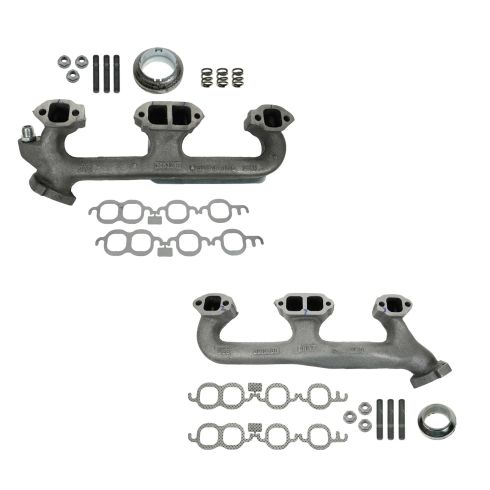DMEEK00014-Chevrolet GMC Cadillac 2 Piece Exhaust Manifold & Gasket Kit Dorman OE Solutions DMEEK00014

Replaces
2000 GMC C3500 Truck V8 5.7L without Air Injection Provisions 2 Piece Exhaust Manifold & Gasket Kit Dorman OE Solutions DMEEK00014

Product Reviews
Loading reviews
4.67/ 5.0
3
3 reviews
Exaust Manifolds
January 4, 2019
Excellent parts service and price. The problem I had was my misunderstanding the listing as KIT. I wound up needing the exaust flanges. So I called A1 to order them but they did not carry flanges.
I found them at a local parts house theyre called hinged flanges. I would think that a distributor as large as A 1 they would array such a part or know what I was talking about when I called.
Im still very happy with A1 and will definitely use them in the future.
Old order
January 11, 2020
Fit just fine. No problems within install and now months later works just fine no leaks or cracks.
Exhaust Manifold purchase
August 17, 2020
I got my Exhaust manifolds from 1aauto and was very pleased with how they looked. They were just as described. I was short one flange stud though, I was having a hard time finding the flange studs before they sent the manifolds, so it was relieving to know that they already sent some so I could compare them and find the correct one that would fit. Thank you for the great experience. Will definitely be ordering from them again.
Customer Q&A
Does this come with the port for egr?
July 17, 2020
10
Hello,
There is a port on the back of the passenger side manifold for the EGR. Thanks!
July 17, 2020
Adam G
GMC is a registered trademark of General Motors Company. 1A Auto is not affiliated with or sponsored by GMC or General Motors Company.
See all trademarks.













